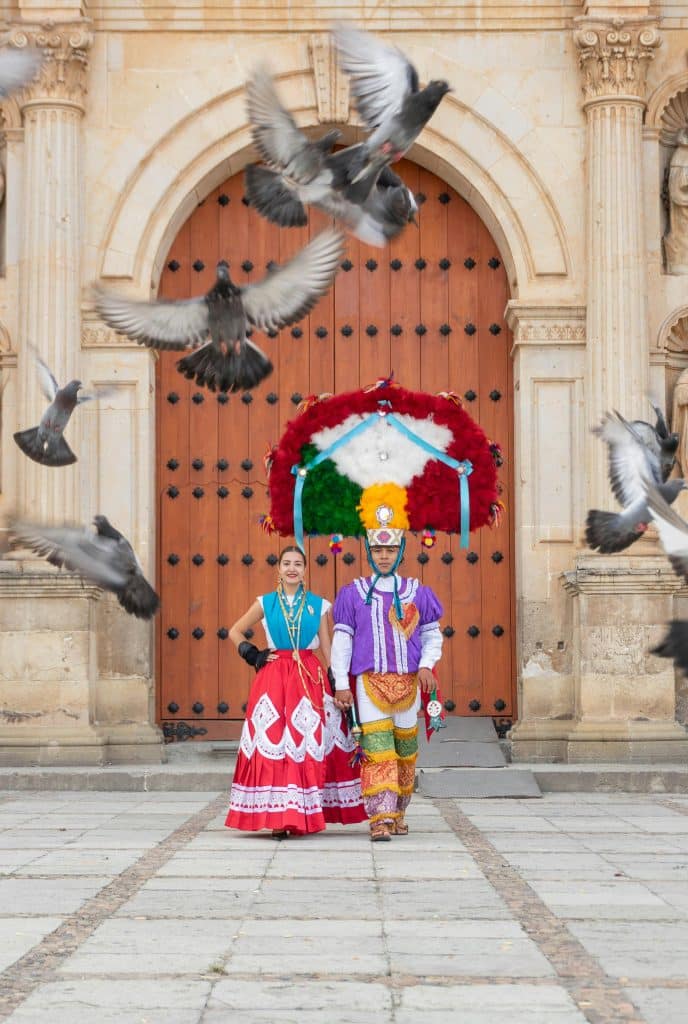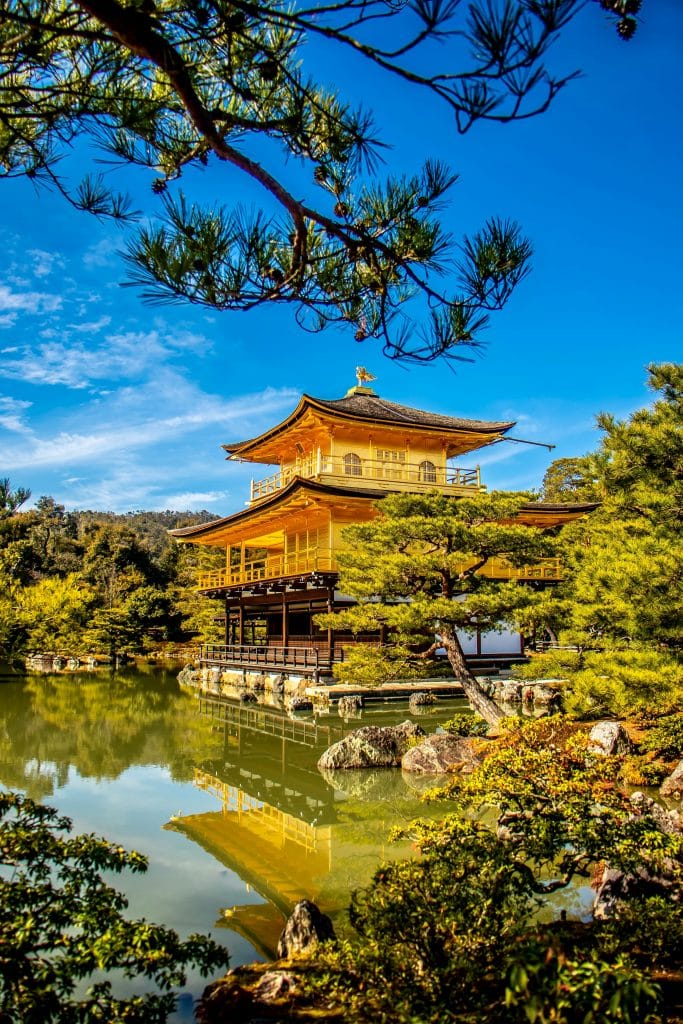For too long, travel has been about collecting snapshots. We rush to the top of a monument, snap a photo, and move on. We tick boxes off a checklist. But the best trips aren’t about the places you see; they’re about the people you meet, the stories you hear, and the traditions that change the way you see the world.
As a traveler, I’ve learned that truly transformative journeys are those that go beyond the guidebook. They are a deep dive into the heart of a destination. They are immersive travel experiences that leave a lasting mark on your soul.
With 2026 on the horizon, the world is waiting. The time is now to start planning a trip that is less about sightseeing and more about living. Here is my list of the best destinations for cultural travel in 2026, each offering a profound journey into the very essence of a culture.
1. Oaxaca, Mexico: The Soul of a Nation

Oaxaca is a city that lives and breathes its culture. It’s a place where ancient traditions blend seamlessly with a vibrant, modern art scene. I have been to many places in Mexico, but nowhere have I felt the heartbeat of a nation as strongly as I did in Oaxaca. It’s a city you taste, hear, and feel.
A Culinary Journey into Mexico’s Heart
You can’t talk about Oaxaca without talking about food. The city is a UNESCO World Heritage Site not just for its architecture, but for its rich gastronomy. This is where you will find the seven famous varieties of mole, a complex and deeply flavorful sauce with a history that stretches back centuries. My first bite of mole negro was a revelation, a mix of chiles, spices, nuts, and chocolate that was both sweet and savory. It was a flavor I’d never experienced before.
- Must-Try Foods:
- Mole: Try mole negro (dark and smoky), mole coloradito (reddish and sweet), and mole amarillo (yellow and spicy).
- Tlayudas: Often called “Oaxacan pizzas,” these are giant, crispy tortillas loaded with beans, cheese, and your choice of meat or vegetables.
- Chapulines: Roasted grasshoppers. Don’t knock them until you’ve tried them! They have a delicious, earthy, and salty crunch.
- Mezcal: The smoky spirit of Oaxaca. Visit a palenque (distillery) to learn about the production process and sip different varieties.
Day of the Dead: More Than a Festival
While Day of the Dead (Día de los Muertos) is celebrated across Mexico, the experience in Oaxaca is on another level. This is not a spooky holiday; it is a beautiful, joyous, and deeply personal time of remembrance. The celebrations begin on October 31st and continue until November 2nd. The city explodes with marigold flowers, vibrant altars (ofrendas), and lively parades called comparsas.
I remember watching a comparsa wind through the streets late at night. Skeletons danced to live music, and the air was thick with the scent of marigolds and copal incense. It felt like the veil between the living and the dead had truly thinned. It was one of the most powerful and moving global cultural events I have ever witnessed.
- Practical Tips:
- Best Time to Visit: Late October to early November for Day of the Dead. It gets crowded, so book flights and accommodations months in advance.
- Cultural Etiquette: Don’t take photos of altars or people without asking for permission. Remember, this is a sacred holiday, not a tourist spectacle.
2. Kyoto, Japan: The Art of Serenity

Kyoto is the very definition of a cultural destination. As Japan’s ancient capital, it has preserved its history and traditions in a way that feels both timeless and deeply alive. It’s a place where every temple, every garden, and every gesture has a story to tell.
The Gion Matsuri: A Tradition Since the 9th Century
If you are planning to visit Japan in 2026, the Gion Matsuri is an absolute must. Held every July, it is one of Japan’s most famous festivals and dates back to 869 AD. The festival takes over the city for the entire month, but the main event is the parade of massive, human-pulled floats, called yamaboko.
I watched in awe as the floats, some weighing over ten tons, were navigated through tight city streets with sheer human power. The atmosphere was electrifying. It was a perfect example of a truly immersive travel experience, where you are not just a spectator but a part of a living tradition.
The Art of the Tea Ceremony
Beyond the grand festivals, Kyoto offers quiet moments of deep cultural significance. One of my favorite experiences was participating in a traditional tea ceremony. It’s not just about drinking tea; it’s a meditative ritual. Every movement is precise, every utensil has a purpose, and the host’s dedication to a flawless experience is humbling. It’s a chance to slow down and appreciate the moment.
- Key Cultural Experiences:
- Zen Gardens: Visit Ryoan-ji to contemplate its famous rock garden. The raked gravel and placement of the stones are meant to aid in meditation.
- Geisha Districts: Walk through Gion in the evening, and you might catch a glimpse of a geiko or maiko (geisha in training) on their way to an appointment. Be respectful and do not chase or harass them for photos.
- Stay in a Ryokan: For a truly immersive experience, book a night in a traditional inn. You’ll sleep on a futon, bathe in a communal bath, and enjoy a traditional Japanese meal.
- Practical Tips:
- Best Time to Visit: July for the Gion Matsuri, or April for the cherry blossoms.
- Cultural Etiquette: Bow when greeting, remove your shoes before entering a home or temple, and always use two hands when giving or receiving something.
3. Lisbon, Portugal: The Soulful Soundtrack
Lisbon is a city built on seven hills, but its true soul lies in its music. The colorful street tiles and lively markets all have a soundtrack. It’s the melancholic sound of Fado. This deeply emotional music is more than just a performance; it’s a window into the Portuguese soul..
The Melancholy and Magic of Fado
I first heard Fado in a small restaurant in the Alfama district. A singer, a fadista, stood with a guitarist and sang with a raw, emotional power. The lyrics spoke of longing, destiny, and a sense of saudade, an untranslatable feeling of nostalgic melancholy. I didn’t understand the words, but the music spoke to me on a visceral level.
Experiencing Fado is one of the best cultural travel experiences for 2026 because it forces you to sit, listen, and feel. It’s a break from the fast pace of modern life and an authentic connection to local tradition.
Festivals and Neighborhood Life
If you visit in June, you’ll witness the Festas de Lisboa. The city transforms into a giant street party celebrating its patron saints. The air fills with the smell of grilled sardines, and the streets are decorated with streamers and balloons. Each neighborhood competes for the best decorations and street entertainment.
A Bonus for 2026: The Solar Eclipse
For anyone planning a trip to this region, 2026 offers a unique bonus. A total solar eclipse will be visible from parts of Portugal and Spain on August 12, 2026. This celestial event provides a perfect opportunity to combine a trip to Lisbon with a rare natural phenomenon.
- Practical Tips:
- Best Time to Visit: June for the Festas de Lisboa, or spring/fall for milder weather and fewer crowds.
- Must-Try Foods: Pastéis de Nata (custard tarts), grilled sardines, and Bacalhau à Brás (shredded codfish).
4. Seville, Spain: The Heart of Flamenco
When you think of Spanish culture, you likely picture the passionate dance of flamenco. While you can find it across the country, its heart and soul reside in Andalusia, and more specifically, in the city of Seville. Flamenco is not just a show for tourists; it is a fundamental part of the region’s cultural identity.
More Than a Performance
Flamenco is an art form of immense depth and emotion. It is a fusion of music (cante), dance (baile), and rhythm (toque). It originated with the Romani people and is an expression of their struggles and joys. I once attended a show in a tiny tablao (a flamenco venue) in the Triana neighborhood of Seville. There was no stage, no grand lighting, just a handful of people and the raw power of the performers. The dancer’s face was a mask of intense emotion, her movements a story of fire and passion. The experience was electrifying. It was a perfect example of a truly immersive travel experience.
Beyond the Stage: The Cultural Experience
To truly appreciate flamenco, you have to look beyond the shows.
- Take a Class: Learning a few basic moves or a simple clap rhythm (palmas) gives you a new appreciation for the skill and passion involved.
- Visit a Peña: These are local flamenco clubs where locals gather to practice and perform. They are less formal than a professional show and offer a more authentic experience.
- Practical Tips:
- Best Time to Visit: Spring for the Semana Santa (Holy Week) and the Feria de Abril (April Fair). These two events are a deep dive into the culture of Seville.
- Cultural Etiquette: When at a show, silence is key. The performance is a serious, emotional art form, and interruptions are considered disrespectful.
5. Marrakech, Morocco: A Symphony of Senses
Marrakech is a city that assaults your senses in the best possible way. The air is thick with the scent of spices and mint, the wonderful colors of the souks are everywhere, and the constant sounds of life in the Medina create a soundtrack unlike any other. Stepping into Marrakech is like stepping into a story that has been told for a thousand years. It is one of the best destinations for cultural travel in 2026.
The Living Heart: Jemaa el-Fnaa
The pulse of Marrakech beats in Jemaa el-Fnaa. This amazing main square is a UNESCO-recognized Masterpiece of the Oral and Intangible Heritage of Humanity. During the day, you will find orange juice vendors and snake charmers. But as the sun sets, a true transformation happens. The square fills with hundreds of food stalls, storytellers, musicians, and performers.
I found a spot on a rooftop terrace overlooking the square at dusk. From there, I watched the magic unfold. The smoke from the grills created a haze over the square, and the sounds of music, laughter, and chatter rose into the night sky. It wasn’t a show; it was a living, breathing part of the city.
- Unique Experiences in Marrakech:
- Get Lost in the Souks: The labyrinthine alleyways of the Medina are filled with specialized markets selling everything from spices and leather goods to lanterns and carpets. Losing your way is part of the fun.
- Take a Cooking Class: Learn to make a traditional tagine and discover the secrets behind Moroccan spices.
- Stay in a Riad: For a truly authentic experience, stay in a Riad, a traditional Moroccan house with an inner courtyard. It is a peaceful, beautiful retreat from the chaotic city streets.
- Visit a Hammam: A traditional public bathhouse offers a deep-rooted cultural experience and a chance to relax and rejuvenate truly.
- Practical Tips:
- Best Time to Visit: Spring and autumn offer comfortable weather. Avoid the peak heat of summer.
- Cultural Etiquette: Dress modestly, especially in religious areas. Always ask for permission before taking a photo of a person. Be prepared to bargain for goods in the souks; it is a cultural ritual.
Ready for Your 2026 Adventure?
Travel is no longer just about seeing the world; it’s about experiencing it. It’s about leaving a place changed by its people and their stories. These cultural travel experiences offer a chance to do just that. They are an invitation to slow down, listen, and truly connect with a destination.
What cultural experience are you most excited to explore in 2026? Are you heading to Oaxaca for Day of the Dead, or are you hoping to catch a Fado performance in Lisbon? Share your own best destinations 2026 with me in the comments below!



